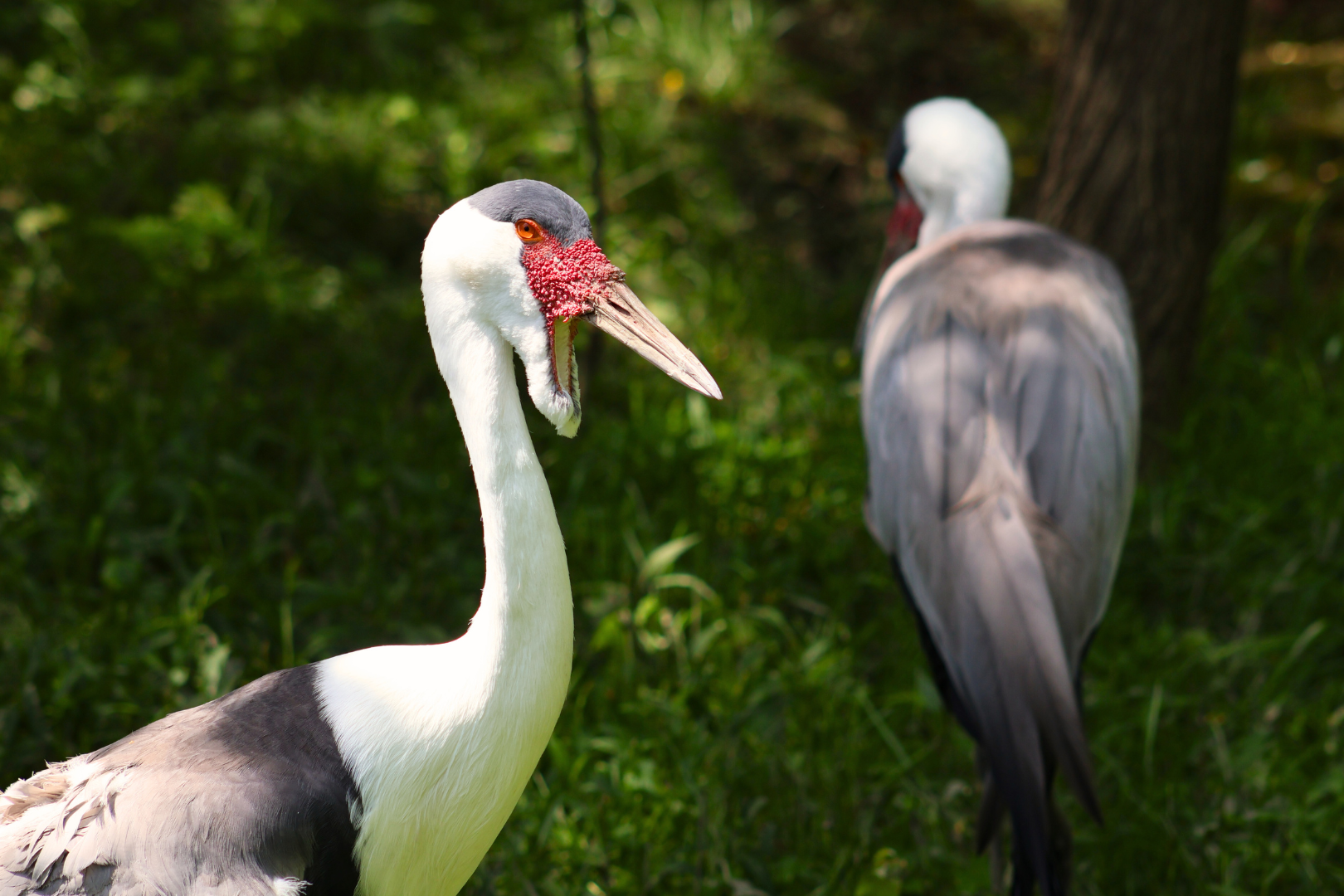I LIVE IN AFRICA
Wattled cranes are most often found frequenting wetlands and floodplains along the western coast of Africa all the way down to Africa’s southern tip.
I AM AN OMNIVORE
Although this avian species will most often eat a varied diet of aquatic vegetation, they have been known to prey on small reptiles, frogs, and insects as well.
WATTLED CRANES ARE SOCIAL
Wattled cranes can live in flocks of up to 50 individuals. This bird will often mate for life and have males have an elaborate courting ritual to help attract a female wattled crane.
WATTLE YOU THINK?
Wattled cranes get their name from the flaps of skins, or “wattles,” that hang from their chins. These wattles are a good indicator of the cranes mood, they will often relax and become elongated when the crane is comfortable and shrink with they are nervous or feeling unsure of something.
HELPING THE WATTLED CRANE IN THE WILD
The wattled cranes at the Fort Wayne Children’s Zoo are enrolled in the Species Survival Plan (SSP). SSP is a program implemented by the Association of Zoos and Aquariums (AZA) to help ensure a genetically viable population exists.
I AM IMPORTANT TO MY ECOSYSTEM
Wattled cranes play a very important role in their ecosystem’s food chain as both predator and prey. This species of crane is also an indicator species. Because they rely so heavily on water and prefer wetland habitats, their presence in an ecosystem indicates good water quality and their absence may indicate negative changes to a wetlands area.

